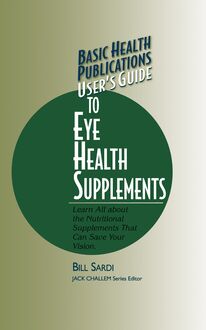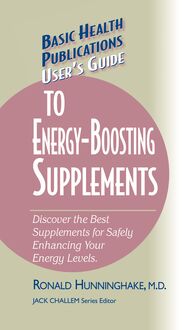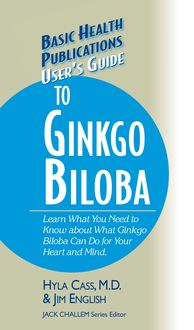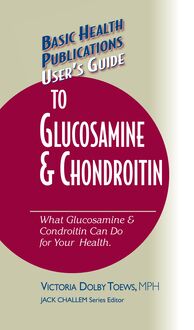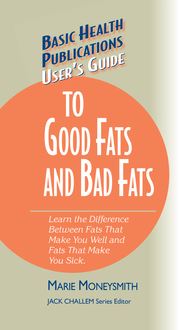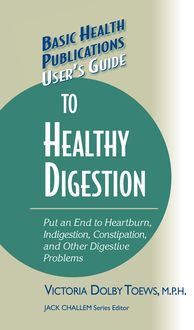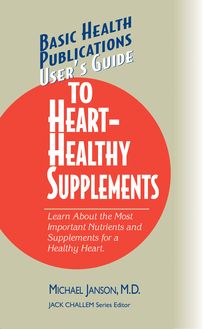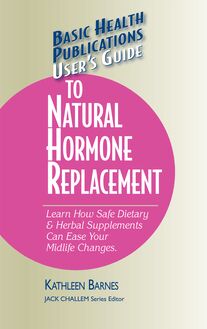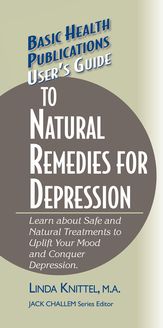-
 Univers
Univers
-
 Ebooks
Ebooks
-
 Livres audio
Livres audio
-
 Presse
Presse
-
 Podcasts
Podcasts
-
 BD
BD
-
 Documents
Documents
-
- Cours
- Révisions
- Ressources pédagogiques
- Sciences de l’éducation
- Manuels scolaires
- Langues
- Travaux de classe
- Annales de BEP
- Etudes supérieures
- Maternelle et primaire
- Fiches de lecture
- Orientation scolaire
- Méthodologie
- Corrigés de devoir
- Annales d’examens et concours
- Annales du bac
- Annales du brevet
- Rapports de stage
La lecture à portée de main
Vous pourrez modifier la taille du texte de cet ouvrage
Découvre YouScribe en t'inscrivant gratuitement
Je m'inscrisDécouvre YouScribe en t'inscrivant gratuitement
Je m'inscrisEn savoir plus
Vous pourrez modifier la taille du texte de cet ouvrage
En savoir plus

Description
Sujets
Informations
| Publié par | Turner Publishing Company |
| Date de parution | 01 mai 2004 |
| Nombre de lectures | 0 |
| EAN13 | 9781591206736 |
| Langue | English |
Informations légales : prix de location à la page 0,0298€. Cette information est donnée uniquement à titre indicatif conformément à la législation en vigueur.
Extrait
The information contained in this book is based upon the research and personal and professional experiences of the author. It is not intended as a substitute for consulting with your physician or other healthcare provider. Any attempt to diagnose and treat an illness should be done under the direction of a healthcare professional.
The publisher does not advocate the use of any particular healthcare protocol but believes the information in this book should be available to the public. The publisher and author are not responsible for any adverse effects or consequences resulting from the use of the suggestions, preparations, or procedures discussed in this book. Should the reader have any questions concerning the appropriateness of any procedures or preparations mentioned, the author and the publisher strongly suggest consulting a professional healthcare advisor.
Series Editor: Jack Challem
Editor: Susan Andrews
Typesetter: Gary A. Rosenberg
Series Cover Designer: Mike Stromberg
Basic Health Publications User’s Guides are published by Basic Health Publications, Inc.
8200 Boulevard East
North Bergen, NJ 07047
1-800-575-8890
Copyright © 2004 by Marie Moneysmith
ISBN-13: 978-1-59120-673-6
ISBN-10: 1-59120-119-5
All rights reserved. No part of this publication may be reproduced, stored in a retrieval system, or transmitted, in any form or by any means, electronic, mechanical, photocopying, recording, or otherwise, without the prior written consent of the copyright owner.
Printed in the United States of America
10 9 8 7 6 5 4 3 2 1
C ONTENTS
Introduction
1. All about Carnosine
2. Protecting Proteins: Carnosine’s Primary Job
3. The Carnosine Connection to Diabetes, Syndrome X, and Weight Management
4. Carnosine and Free Radicals, the Enemies of Good Health
5. Carnosine for Longevity
6. Carnosine for Overall Good Health
7. Carnosine: Treating the Untreatable
8. Choosing Carnosine Supplements
Conclusion
Selected References
Other Books and Resources
I NTRODUCTION
C arnosine may be one of the best-kept secrets in the supplement world. In fact, it has such a low profile that when people first hear its name, they often confuse it with carnitine , which is a very different substance.
Technically, carnosine is not a vitamin or mineral. It is a is dipeptide, but don’t be put off by the unfamiliar terminology. A dipeptide is simply a compound created by the union of two amino acids, in this case, alanine and histidine.
Amino acids are best known as the building blocks of protein. But in the case of carnosine, the pairing creates a compound substance with a special synergy that takes it far beyond protein creation. Carnosine has shown great promise for improving all-around health, slowing the aging process, and even treating such difficult conditions as Alzheimer’s disease, Parkinson’s disease, and autism.
Why is a supplement as powerful as carnosine not better known? Even though there are more than 1,000 studies focusing on carnosine, most of them were done abroad, primarily in Russia, and more recently in Europe and other parts of Asia. As a result, American medical experts and the media have largely been unaware of the extensive research on this potent substance. That is likely to change in the near future, however. Carnosine simply has too much to offer to a wide range of the population to remain in the background.
Take, for example, the baby-boom generation, composed of millions of men and women born between 1946 and 1964. The baby boomers are taking the clichés about growing old and turning them upside down. Thanks to advances in anti-aging medicine, not to mention plastic surgery, the baby boomers are not going to go quietly into old age. In fact, they seem to be determined to actively engage in hand-to-hand combat with Father Time and Mother Nature, with no plans to surrender any time soon.
Not surprisingly, anti-aging medicine is the fastest-growing segment of preventive health care in this century, a multibillion-dollar business fueled in large part by the baby boomers’ reluctance to grow old. For some people, anti-aging is not a matter of quantity but quality. They’re more interested in how well they live, rather than how long, so staying healthy and robust is the primary goal. For others, maintaining youth means avoiding wrinkles and gray hair, as well as creaky joints and “senior moments.”
Where does carnosine fit into this picture? Everywhere. Let’s start with heart disease, the nation’s number-one killer. Carnosine enhances heart health in several ways, including interference with the production of LDL (low-density lipoprotein, or “bad”) cholesterol. It helps keep blood vessels supple and “young,” as well.
Aside from heart disease, carnosine helps us maintain good health in other ways. For example, carnosine has special antioxidant abilities that enable it to protect our cells and their contents, including our genes, from damaging rogue molecules known as free radicals. Although assaults by free radicals affect us on a microscopic level and aren’t immediately apparent, illness will eventually result. Cancer, for example, is a disease that by and large takes years to develop. During that time, the body’s cells are quietly being altered by compounds that could be eliminated by substances such as carnosine. In fact, many experts say carnosine could become a potent weapon in the war against cancer.
Carnosine also has an important function with regard to aging. According to one theory of aging, free-radical damage is linked to many of the devastating diseases associated with advancing years. All antioxidants play a major role in good health at any age, but become increasingly important as the years pass. Vitamins A, C, and E and the minerals selenium and zinc are well-known antioxidants. A powerhouse antioxidant, carnosine supports the work of these and other free-radical fighters.
However, carnosine goes a step further, by preventing a serious form of protein damage known as glycation. Free radicals and antioxidants have become household words, but many people are unaware of the harmful effects of glycation, an irregular bonding of sugar and protein with extensive health consequences, including hastening the aging process. Recognizing how glycation occurs and how it can be prevented—or at least minimized—with carnosine can help avoid the damage that accrues with time.
But carnosine’s antiglycation benefits don’t end there. People with insulin resistance, a major factor in a condition known as Syndrome X, and those with diabetes are also prone to glycation. In their cases, glycation stimulates the aging process, but fortunately, they can gain protection from carnosine.
Carnosine provides other anti-aging benefits. For instance, although scientists are not sure exactly how it works yet, carnosine has been shown to rejuvenate old cells and also help them live longer, an ability that could help keep the body in peak shape in later years. Carnosine also interferes with the creation of beta-amyloid, a substance associated with Alzheimer’s disease, and carnosine eyedrops fight the formation of cataracts, the leading cause of vision difficulties in the elderly. Additionally, as a cream, carnosine can be applied to the skin to minimize wrinkles and age spots.
Although osteoporosis is now a household word, the Centers for Disease Control (CDC) recently named a condition known as “sarcopenia” as one of the top five health risks among older adults. Sarcopenia is a combination of the gradual erosion of lean muscle and the accumulation of fat that eventually causes frailty in older people, and is believed to contribute to bone-breaking falls. After age forty, the typical adult loses from one-fourth to one-third of a pound of muscle each year and gains about the same amount in body fat. The result: overall weakness that can be immobilizing. Stairs become a challenge. Even getting up from a chair may require assistance. Strength training is the best-known way to counteract sarcopenia, and carnosine can be a valuable ally. Studies have shown that carnosine can rejuvenate and strengthen muscles, as well as increase energy and endurance, among athletes and nonathletes alike. For a generation of aging baby boomers, carnosine may help them avoid falling victim to one of the most common indignities suffered by the elderly—loss of independence.
Similarly, inflammation has recently been acknowledged to be closely linked to a wide range of serious, chronic health conditions and diseases. Here again, carnosine can help minimize inflammation through its role as an antioxidant and by removing some of the substances responsible for inflammation.
Carnosine plays other roles in good health. For example, it has been shown to help wounds heal faster, both on the skin’s surface and internally, in the form of ulcers. Carnosine is found in high concentrations in muscle tissue, and, not surprisingly, it has been used for years by athletes and bodybuilders to overcome muscle fatigue. While it is considered a worthwhile addition to any athlete’s regimen, it can also help the average person work out more efficiently, a factor that can contribute to weight loss. And in our country, with more than 60 percent of the adult population overweight or obese, that is no small advantage.
Although research is in its early stages, several studies show that neurodegenerative ailments, such as Parkinson’s disease, respond well to carnosine. And a recent clinical trial in Chicago found that carnosine improves symptoms of autism in children, creating tremendous excitement for the growing number of families challenged by this condition.
Store shelves are filled with supplements making claims backed by only a handful of studies. By contrast, there is no shortage of carnosine research. In literally hundreds of studies, minor side effects have been found only rarely, and even then onl
-
 Univers
Univers
-
 Ebooks
Ebooks
-
 Livres audio
Livres audio
-
 Presse
Presse
-
 Podcasts
Podcasts
-
 BD
BD
-
 Documents
Documents
-
Jeunesse
-
Littérature
-
Ressources professionnelles
-
Santé et bien-être
-
Savoirs
-
Education
-
Loisirs et hobbies
-
Art, musique et cinéma
-
Actualité et débat de société
-
Jeunesse
-
Littérature
-
Ressources professionnelles
-
Santé et bien-être
-
Savoirs
-
Education
-
Loisirs et hobbies
-
Art, musique et cinéma
-
Actualité et débat de société
-
Actualités
-
Lifestyle
-
Presse jeunesse
-
Presse professionnelle
-
Pratique
-
Presse sportive
-
Presse internationale
-
Culture & Médias
-
Action et Aventures
-
Science-fiction et Fantasy
-
Société
-
Jeunesse
-
Littérature
-
Ressources professionnelles
-
Santé et bien-être
-
Savoirs
-
Education
-
Loisirs et hobbies
-
Art, musique et cinéma
-
Actualité et débat de société
- Cours
- Révisions
- Ressources pédagogiques
- Sciences de l’éducation
- Manuels scolaires
- Langues
- Travaux de classe
- Annales de BEP
- Etudes supérieures
- Maternelle et primaire
- Fiches de lecture
- Orientation scolaire
- Méthodologie
- Corrigés de devoir
- Annales d’examens et concours
- Annales du bac
- Annales du brevet
- Rapports de stage

